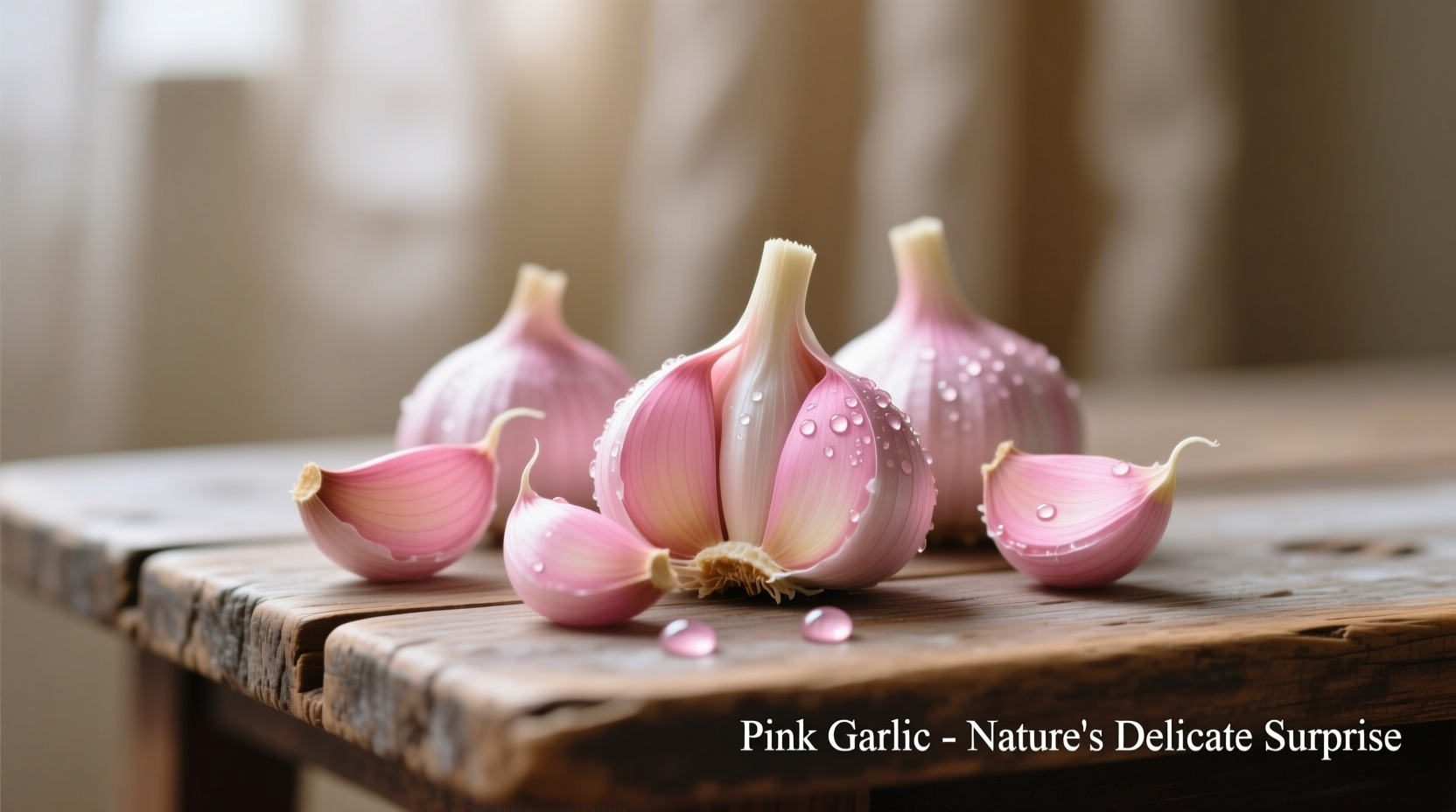Discover why professional chefs and home cooks increasingly reach for this vibrant ingredient when they want complex garlic flavor without overwhelming heat. Unlike regular garlic that can dominate dishes, pink garlic delivers nuanced taste that enhances rather than overpowers—making it ideal for raw applications like salad dressings, aiolis, and fresh salsas where garlic's sharpness typically proves challenging.
What Makes Pink Garlic Different From Regular Garlic
While both varieties belong to the Allium sativum species, pink garlic's unique characteristics stem from specific growing conditions and genetic traits. The pink or purple pigmentation appears in both the skin and inner cloves due to anthocyanin compounds—same antioxidants found in red cabbage and blueberries. These pigments develop most prominently when garlic experiences cool nighttime temperatures during bulb formation.
| Characteristic | Pink Garlic | Regular White Garlic |
|---|---|---|
| Flavor Profile | Mild, sweet, floral notes | Sharp, pungent, sulfurous |
| Raw Heat Level | 2-3 on 1-10 scale | 7-9 on 1-10 scale |
| Storage Life | 3-4 months refrigerated | 6-8 months at room temperature |
| Peak Season | May-July | October-February |
Where Pink Garlic Thrives and Why It's Special
California's Central Valley produces approximately 85% of America's pink garlic, particularly around the town of Gilroy—self-proclaimed "Garlic Capital of the World." The region's unique combination of rich soil, Mediterranean climate, and precise irrigation creates ideal growing conditions. Spanish and Chinese cultivars also contribute significantly to global supply, each with subtle flavor variations based on terroir.
According to agricultural research from the University of California Cooperative Extension, pink garlic varieties like Rose de Lautrec and California Early develop their signature coloration through specific anthocyanin production pathways activated by temperature fluctuations. This same research confirms that the milder flavor profile results from lower allicin concentration—the compound responsible for garlic's characteristic pungency.

Practical Culinary Applications for Home Cooks
Maximize pink garlic's unique qualities by understanding when it shines and when regular garlic might serve better:
- Raw preparations: Use in salad dressings, herb oils, and compound butters where white garlic would prove too harsh
- Quick-cooking dishes: Add during last 2-3 minutes of sautéing to preserve delicate flavor notes
- Roasting: Whole bulbs develop caramelized sweetness without bitter notes common in white garlic
- Avoid: Long simmers in tomato sauces or stews where its subtle flavor gets lost
Professional chefs at the Culinary Institute of America recommend using pink garlic when creating dishes for guests with sensitive palates or when garlic should complement rather than dominate other ingredients. Its visual appeal also makes it ideal for presentations where color contrast matters.
Nutritional Profile and Health Considerations
Pink garlic contains the same beneficial organosulfur compounds as white garlic, though in slightly different proportions. Research published in the Journal of Agricultural and Food Chemistry confirms that while allicin levels are lower, pink varieties contain higher concentrations of other beneficial compounds like ajoene and vinyldithiins.
The USDA FoodData Central database shows comparable nutritional values between garlic varieties:
- Calories: 149 per 100g
- Carbohydrates: 33g
- Protein: 6.4g
- Vitamin C: 31% of daily value
- Manganese: 63% of daily value
While some wellness blogs make exaggerated claims about pink garlic's health benefits, current scientific evidence doesn't support significant advantages over regular garlic for most health outcomes. Both varieties offer similar cardiovascular and immune system support when consumed as part of a balanced diet.
Sourcing and Storage Best Practices
Farmers' markets represent the most reliable source for fresh pink garlic during its short seasonal window. When selecting bulbs, look for:
- Firm, plump cloves without soft spots
- Intact papery skin with visible pink or purple streaks
- Heavy weight relative to size
- No signs of sprouting
Unlike white garlic that stores well at room temperature, pink garlic requires refrigeration to maintain quality. The University of California's post-harvest guidelines recommend storing in a perforated plastic bag in the vegetable crisper drawer. Properly stored, it maintains peak quality for 3-4 months—significantly shorter than white garlic's 6-8 month shelf life at room temperature.
When Pink Garlic Isn't the Right Choice
Understanding pink garlic's limitations proves just as important as recognizing its strengths. This variety works poorly in applications requiring:
- Extended cooking times (flavor dissipates)
- Strong garlic presence (pasta sauces, garlic bread)
- Long-term preservation (pickling, freezing)
- Traditional recipes specifying white garlic
Consider pink garlic your secret weapon for dishes where garlic should enhance rather than dominate—a specialty ingredient that elevates specific preparations when used thoughtfully.











 浙公网安备
33010002000092号
浙公网安备
33010002000092号 浙B2-20120091-4
浙B2-20120091-4